One of the most popular tourist destinations for international visitors in Tokyo must be the Meiji-Jingu shrine, which enshrined the Meiji Emperor (1852-1912). Its sacred and holly atmosphere in the shrine’s forest gives us calm and peaceful feelings so that the tourists might forget that they are walking in the middle of one of the busiest cities in the world.
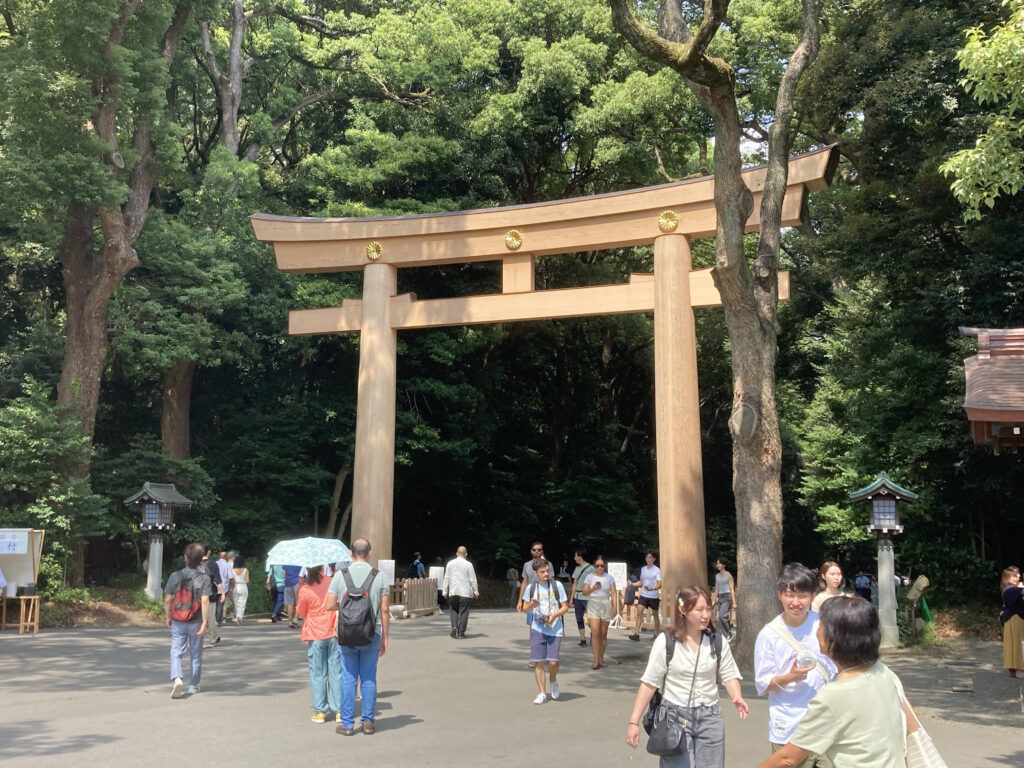
I recommend you visit Meiji-Jingu using the JR Yamanote Line. You will find the reason when you get off the train at the Harajuku station and pass through the ticket gate. If you turn to the east exit after the gate, you find you are about to go into the modern and pop-culture town of Harajuku. On the other hand, turning to the west exit, you will be welcomed with a great shrine gate,Ichi-no-Torii, and the entrance of a deep forest, which work to switch your mind to a holly mood.


The current Ichi-no-Torii was renewed in April 2022. It uses 260-year-old Japanese cedar wood for the pillar on the west side and 280-year-old one for the pillar on the east. Both are eleven meters high and 1.06 meters in diameter. The 15.6-meter-long top beam lies over the two pillars. All timbers that had grown in Japan were cut down, and a ritual ceremony was carried out for the deity of the wood.
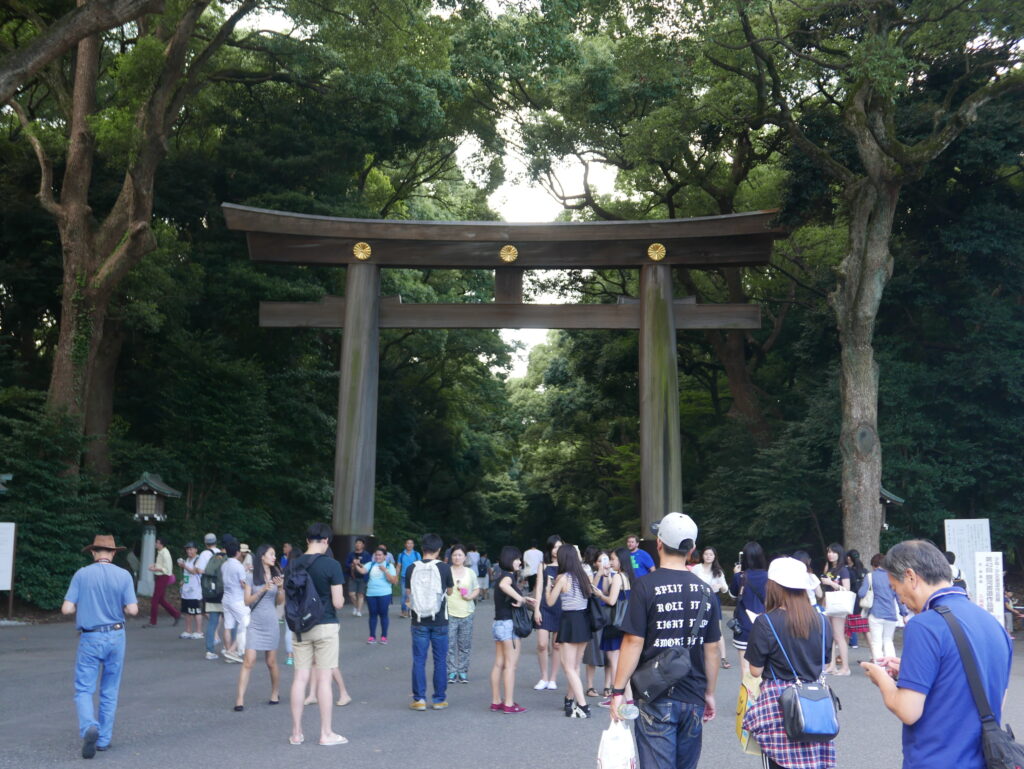
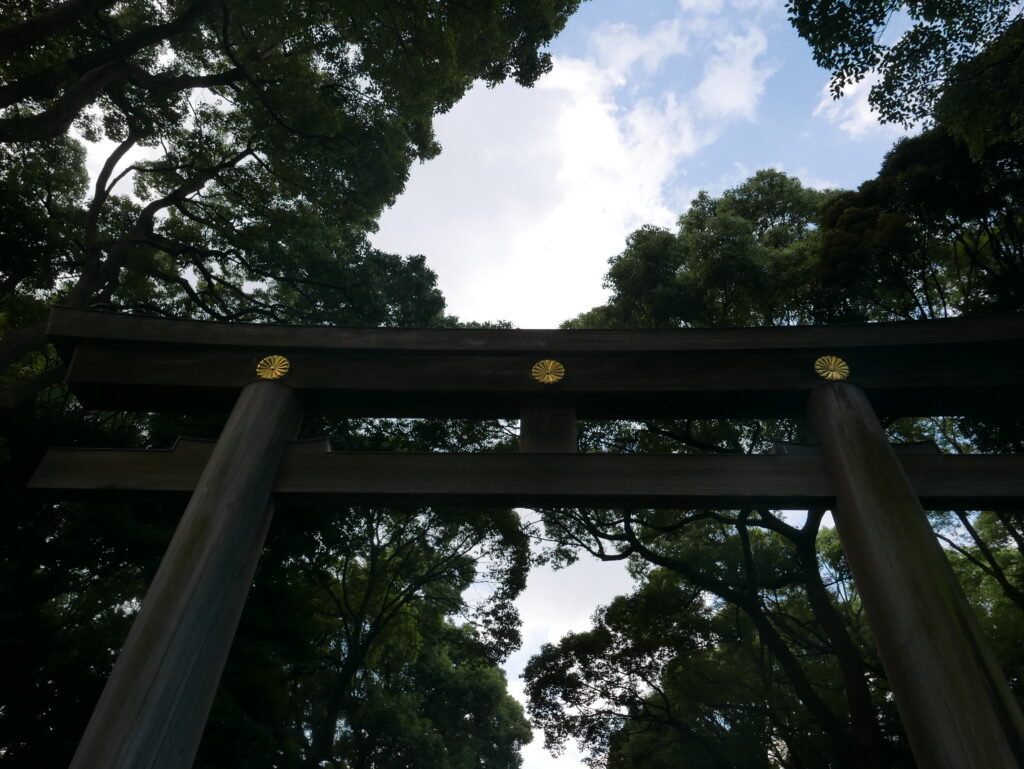
Visitors, at first, bow in the direction of the main worship hall before passing under the Torii and then should walk on either the right or left side paths basically because the center passage is believed to be the route where the deities go and come by. But unfortunately, many visitors, even young Japanese, don’t know it.
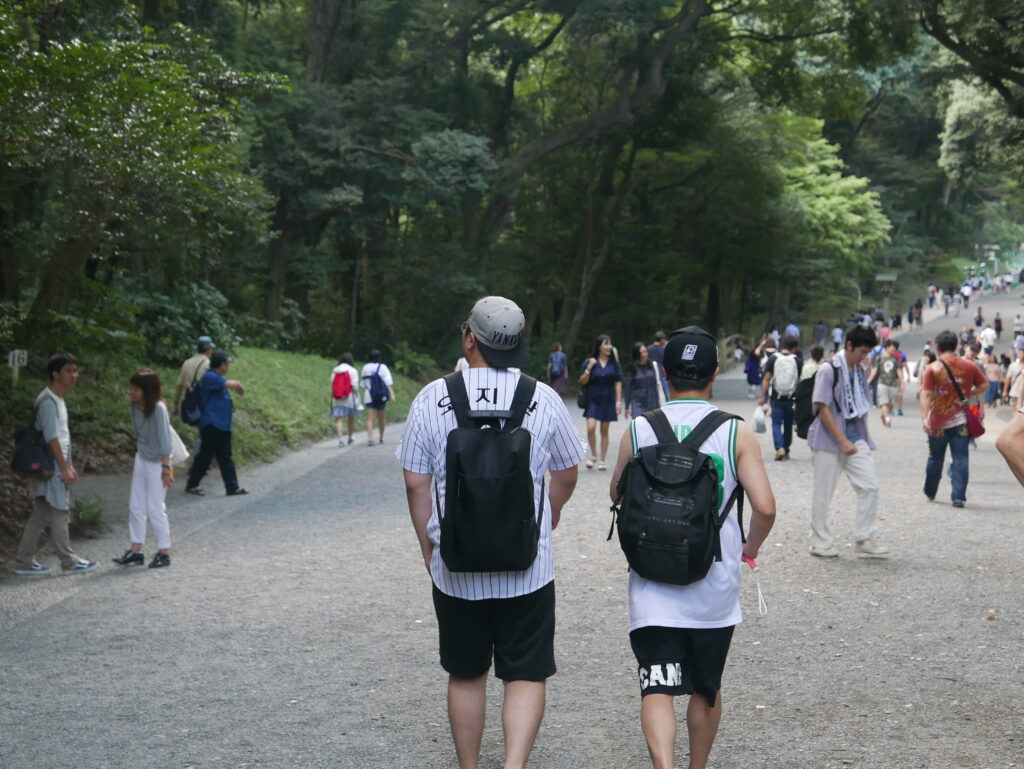
On the way to the main worship hall, just before the Ni-no-Torii (the second gate), you can find barrels of sake, Japanese liquor brewed from rice on the right side, and wine tonneau on the left.
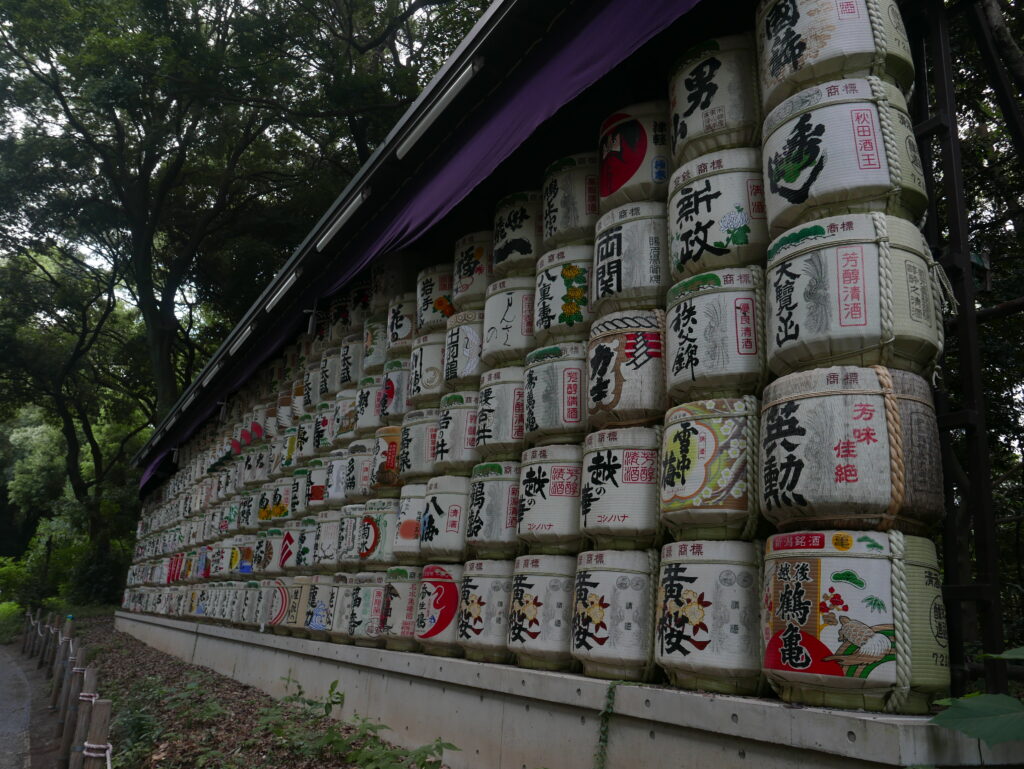
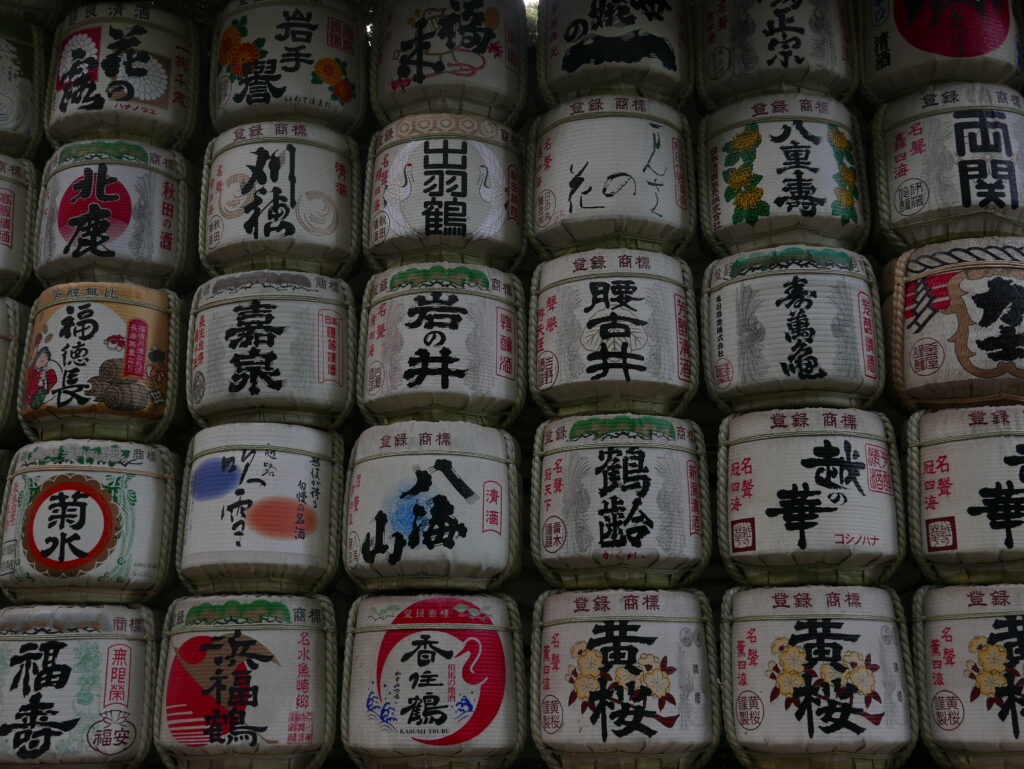
The sake is an integral part of the shrine’s ritual. Ancient people must have viewed alcohol as a “mysterious drink” due to its effects and the ability of alcohol to prevent foods from rotting. Even in Japan, our ancestors seemed to view this mysterious drink, as “something pure” and “something that brings us closer to the realm of the deities.”
Even before Buddhism was brought into Japan in 538, “Shinto rituals” in which people prayed to deities and listened to their teachings had been an essential and integral part of their daily life, and “sacred sake” was always offered in those scenes.
A Shinto ritual is regarded as communication with the deity. At the end of the Sinto events, there is always Naorai, where all participants drink “sacred sake” and eat “Shinsen,” meals offered to the deities. When we eat what the deity has eaten, we believe that we also receive a share of its spiritual power.
Let’s talk about the wine barrels. These barrels have been donated by wine brewers in Bourgogne, France, since 2006. Mr. Yasuhiko Sata, a Japanese and honored citizen of Bourgogne, initiated the project to offer wine to Meiji-Jingu because Meiji Emperor loved wine. Since then, many wine barrels have been donated to the shrine, reaching 201 barrels as of 2022. Now, at the Imperial dinner, wine from only Bourgogne is served, and French tourists seem very proud of it when they learn about the background history of the wine barrels in the shrine.

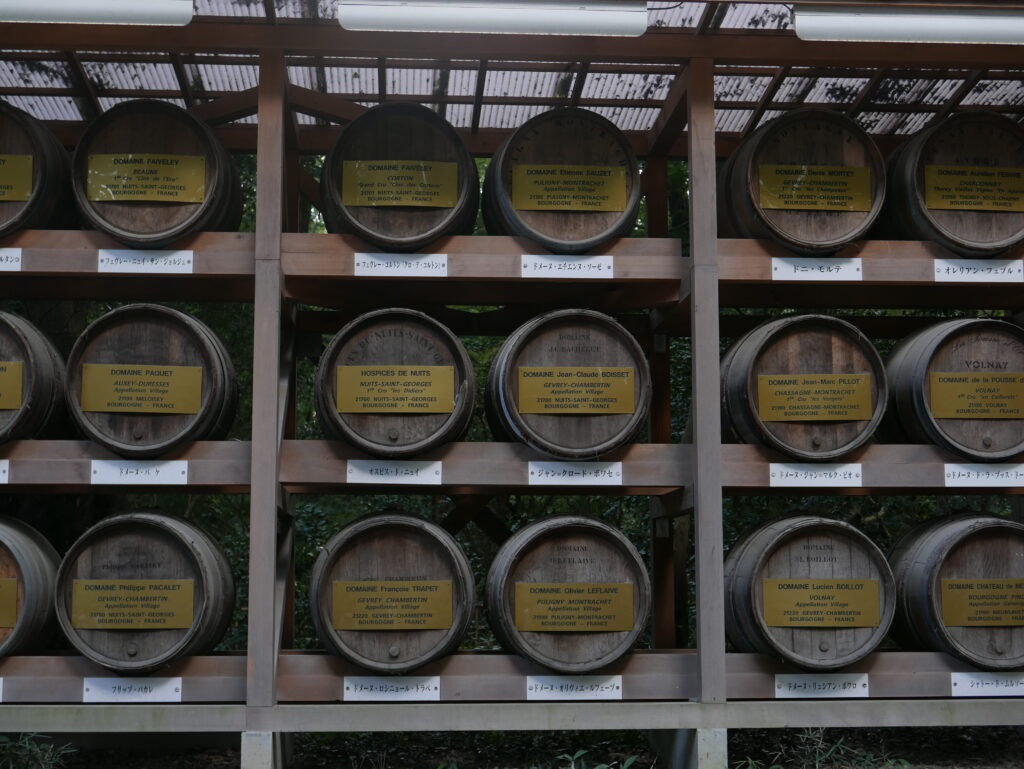
I would like to continue to the next post. (I am sorry; it is being prepared for the next post now.)
If you are interested in a walking tour of the Meiji-Jingu shrine and the Harajuku area, please contact me by clicking the link below.
If you are interested in a walking tour of the Meiji-Jingu shrine and the Harajuku area, please contact me by clicking the link below.
Also, I am eager to read your feedback on this post. Please leave it in the comment box at the bottom of this post.
Please click the links to get updated via my X (former Twitter) and Instagram.
X (former Twitter): https://x.com/ToruGuide
Instagram: https://www.instagram.com/toruhigaki/
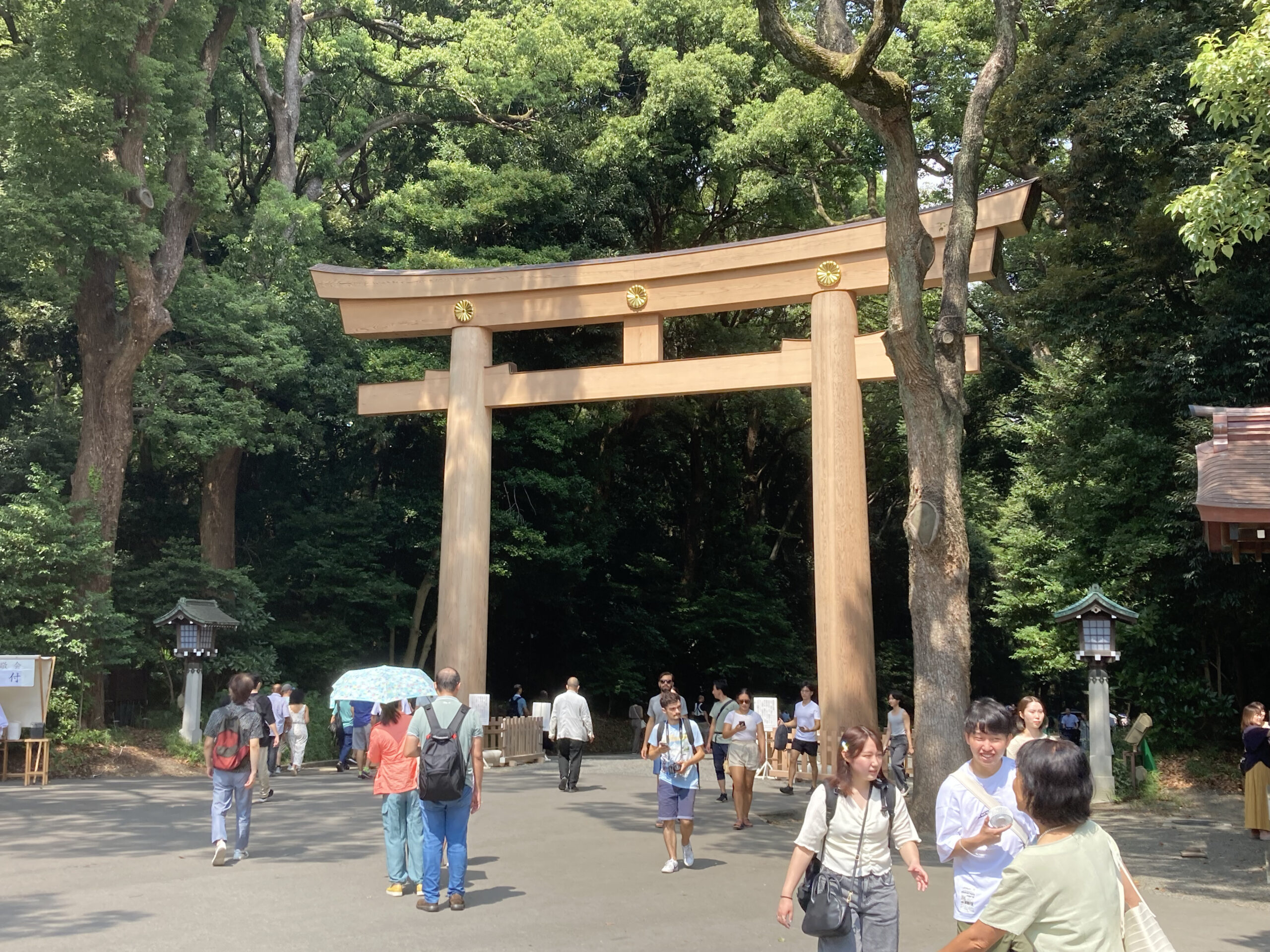


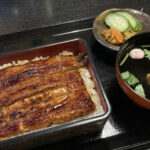
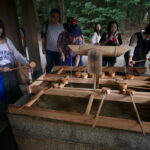
Comment